Acer V7-482PG-9884 Review: Everything You Need
by Jarred Walton on August 24, 2013 12:00 AM ESTAcer V7 Gaming Performance
Our focus for gaming performance is going to be on our Value and Mainstream settings, although we’ve also run our Enthusiast settings and as usual you can find the results in Mobile Bench. The short summary is that in most cases, the Aspire V7 easily handles the Value settings and typically gets above 30 FPS on the Mainstream settings; what that means for 1080p gaming is that medium detail should suffice, but anything more and you’re often going to drop below 30 FPS. I’ll save additional commentary for after the graphs break….
One other item to discuss before we get to the gaming benchmarks is the 4GB DDR3-1800 RAM used on the GT 750M. I commented earlier that the amount of RAM is overkill, and the decision to use DDR3 instead of GDDR5 would likely reduce performance quite a bit. There are of course ways to mitigate this, as well as investigate how much the GPU memory bandwidth limits performance. I installed MSI Afterburner 3.0 Beta 14 (gotta love the monthly betas that keep expiring...), and proceded to overclock just the RAM. Initially I tried for DDR3-2500, but that resulted in a frowny-faced BSOD (Windows' 8 has a much nicer BSOD, apparently). DDR3-2300 failed as well, but without the BSOD, while DDR3-2200 ran through all of our gaming benchmarks without issue. That represents a 22% overclock of the RAM, and I've included the results in the charts below.
Value Gaming Performance
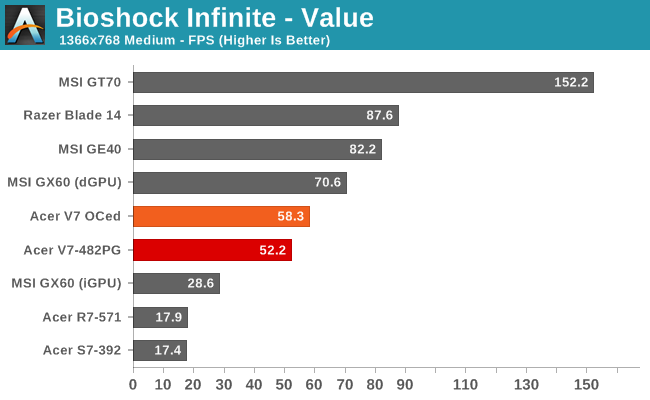
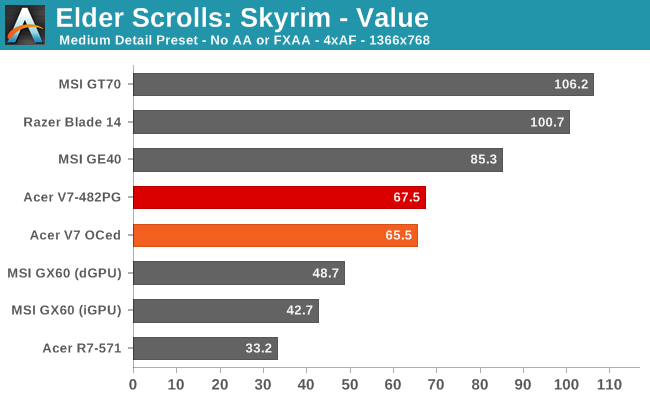
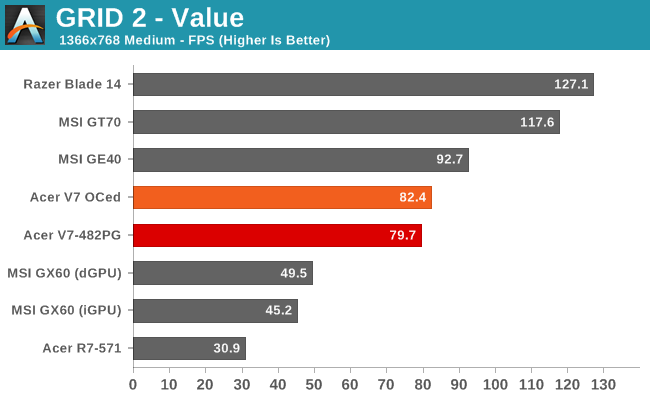

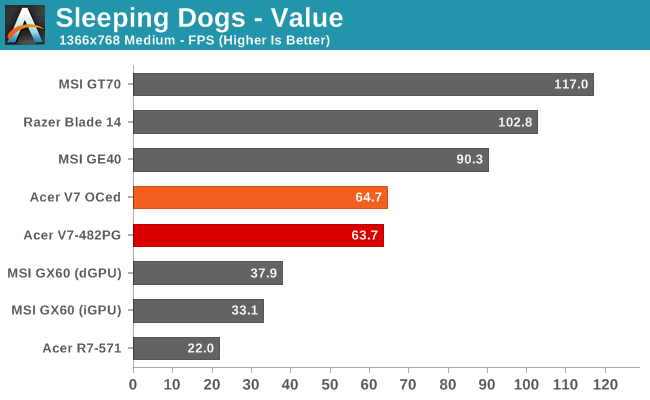
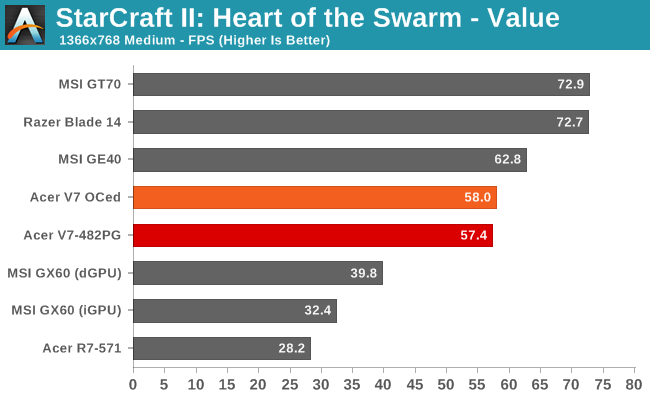
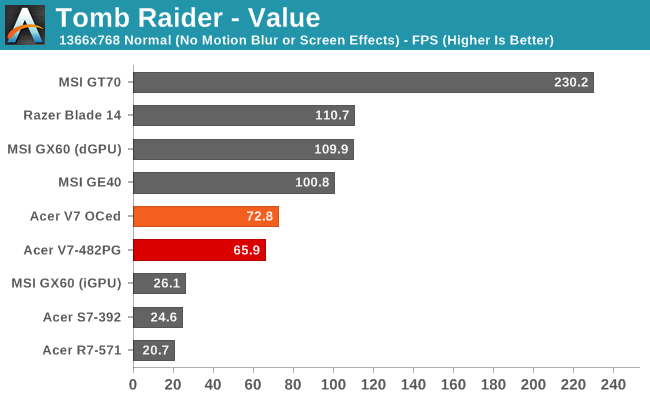
Mainstream Gaming Performance
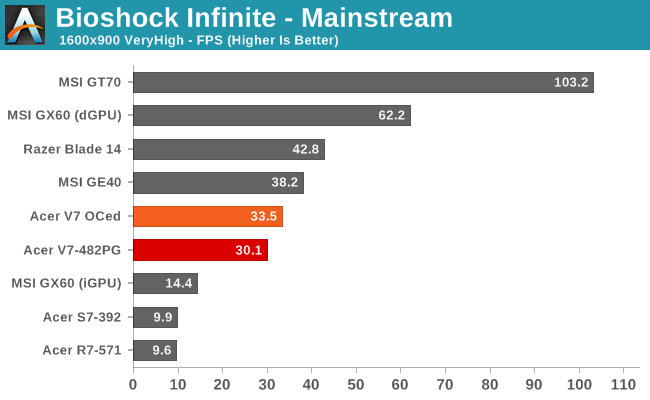

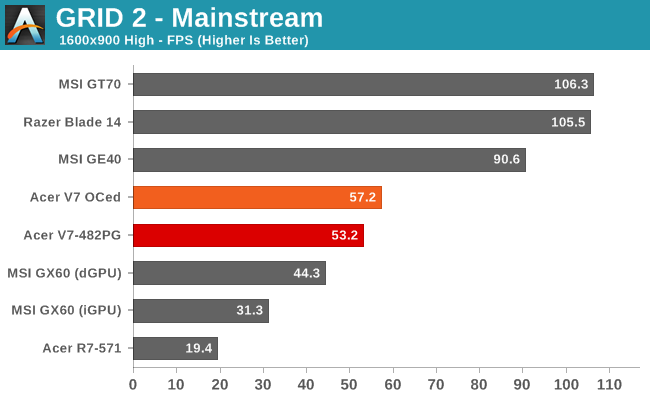
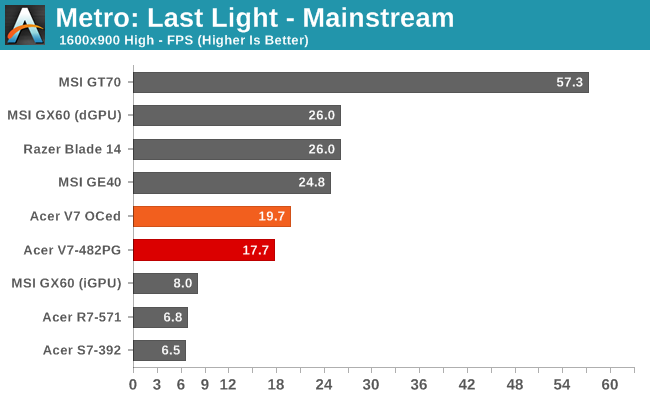
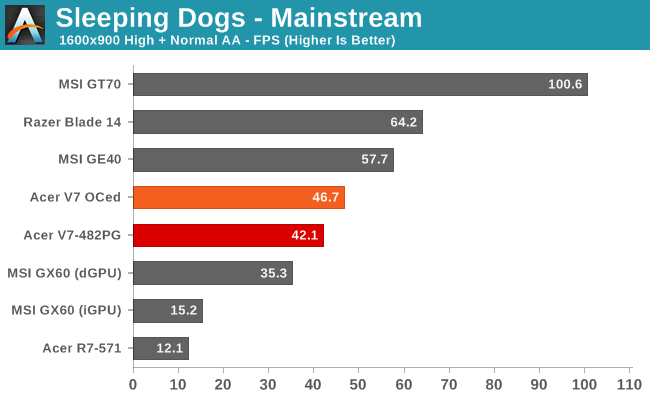


The two most demanding games in our test suite right now are Metro: Last Light and Company of Heroes 2 – I didn’t include graphs for the latter above, simply because we’ve only run it on three laptops so far, but it ends up being the slowest running game in our suite by far to the tune of 23.7 FPS at 1366x768 medium/low settings. It’s basically the opposite of StarCraft 2: Heart of the Swarm, where it apparently pounds the GPU (shaders) and doesn’t require as much of the CPU. Speaking of which, Skyrim and StarCraft 2 are in the interesting camp of being more CPU limited, so we actually see better numbers from the Aspire V7 with GT 750M than we get from the MSI GX60 with HD 7970M, even at our Mainstream settings. Somewhat surprisingly, GRID 2 and Sleeping Dogs also fall into that category, at least if we limit ourselves to the Mainstream settings.
It all goes back to what I was talking about in the introduction: balance. The Acer V7 is certainly not the fastest laptop on the block, and the GT 750M really has no business outperforming an HD 7970M. The problem is the CPU-GPU balance in the GX60 is just way off. In some games like Tomb Raider and Bioshock Infinity, even moderately slow CPUs are fast enough; in other cases, however, more (single-threaded) CPU performance is required. In an Ultrabook like the V7, I think the GT 750M is a pretty good fit for a Haswell ULT CPU.
My only wish is that Acer had equipped the GPU with 2GB GDDR5 memory; I don’t know exactly how much that would have helped, but simply overclocking the DDR3 memory by 22% produced some interesting results. At our less demanding Value settings, the overclock only improves performance by 3.6% on average, and in one game at least (Skyrim) it was actually slightly slower. The reason for the lack of improvement is that Value settings tend to be more CPU constrained, so increasing the GPU performance doesn't always help much; still, Bioshock and Tomb Raider both improve by over 10%. Move up to the Mainstream settings and the increased memory bandwidth becomes far more useful. There we see an average performance increase of 11.5%, and only Skyrim and GRID 2 fail to post double digit percentage improvements.
If all of this can be achieved with a 22% overclock of DDR3 RAM, what would more than doubling the bandwidth with GDDR5 accomplish? It definitely wouldn't reduce performance, and I wouldn’t be surprised to see an extra 15-30% performance increase at our Mainstream settings for a relatively minor change in BOM costs. Even without GDDR5, though, the Acer V7 posts respectible numbers and can handle most games at 1080p and Medium detail. It's not a gaming enthusiasts dream laptop, but for less demanding gamers it's more than sufficient.










62 Comments
View All Comments
Yoshibear123 - Wednesday, January 29, 2014 - link
I found this at best buy (Canada) for only $850, seems like a total steal. My only concern is how reliable Acer is in terms of customer service, and more importantly if the warranty is any good, but otherwise I'm very surprised that no one seems to have heard about it.http://www.bestbuy.ca/en-CA/product/acer-acer-v7-1...
Yoshibear123 - Wednesday, January 29, 2014 - link
http://www.bestbuy.ca/en-CA/product/acer-acer-v7-1...